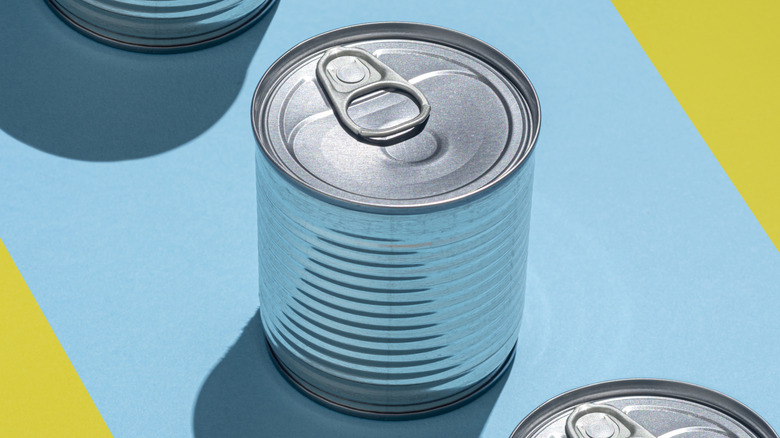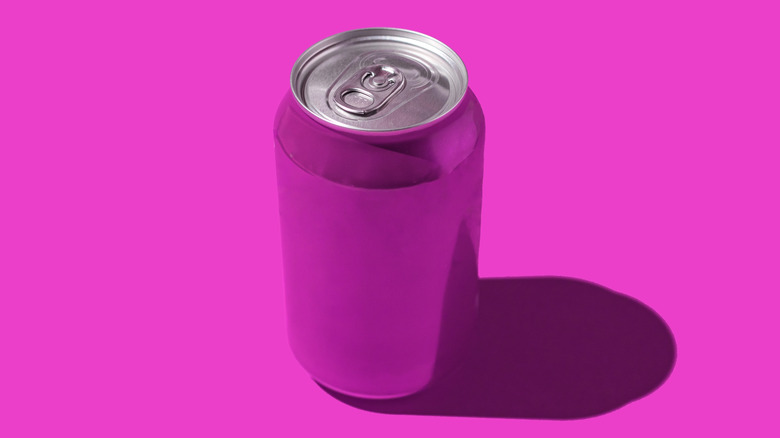There's A Reason Canned Food Containers Are Always Ribbed
You might not think it, but the invention of canned foods was one of the most high-stakes endeavors in the history of the food industry. It all began with a challenge from none other than Napoleon Bonaparte, who was desperate for a way to keep his army well-fed during long military campaigns. He offered a prize of 12,000 francs to anyone who could come up with a method to preserve food for long periods without it becoming infested by bacteria. It took 15 years for someone to answer his call, but in 1809, French inventor Nicolas Appert devised a way to safely seal food in jars, and the next year, Englishman Peter Durand improved on the method by swapping jars for cans made from tin.
You can sterilize containers with heat, and that's exactly what Durand did to make sure canned foods stayed bacteria-free. However, it takes a very strong material to withstand the intense heat and pressure involved in canning, which means the tin sides need structural reinforcement. Those ribs you see on the side of canned foods like tomatoes and beans strengthen the walls of the can like the folds in corrugated cardboard. Without these ridges, canned foods would be significantly more difficult to manufacture, ship, and store safely.
Why food cans need ribs but soda cans do not
The ribs on cans of food are instrumental in the canning process itself for the sake of enduring the heat and external pressure caused by boiling the cans to sterilize them, but the useful nature of these little ridges extends well beyond the factory. The crinkled sides of the cans, along with their cylindrical shape helps them to resist denting. This prevents the contents from being damaged or leaking out of the can during storage and transport, and provides more assurance that external bacteria can't get in. If food cans had smooth sides, groceries wouldn't be able to stack pallets of them without them crumpling under their own weight, leading to major messes and lots of food and money gone to waste.
You've probably noticed that food cans are starkly different from the aluminum cans used for sodas and beer. Those are never ribbed, and their walls are thin, which might make you think they're less structurally sound. However, soda and beer cans don't need to have ribs because the carbonation of the beverage creates a great deal of internal pressure. This pressure strengthens the can and prevents it from denting, but once the can is empty, it crumples with ease. Try to crumple an empty food tin, on the other hand, and those sturdy ribs won't give.

